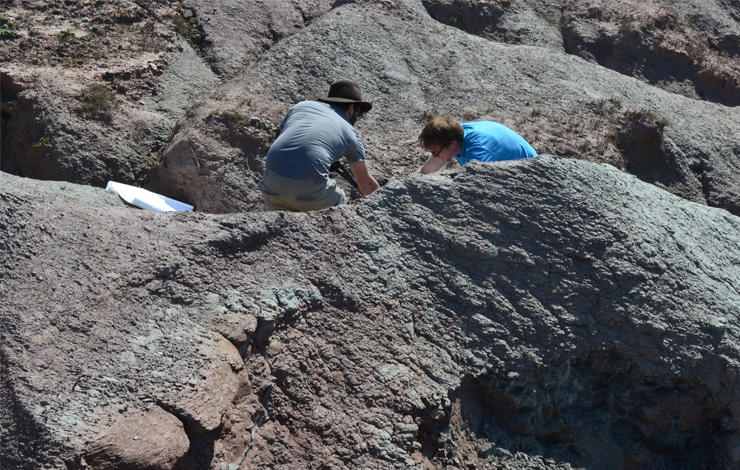12-12-2019

A new study, focused on tiny teeth collected from the cliffs of Lourinhã and published in the prestigious international scientific journal "Zoological Journal of the Linnean Society", shows that at least five species of crocodilomorphs cohabitated 150 million years ago in a system of Jurassic rivers in the region.
This work is part of the Master's thesis in Paleontology by Alexandre Guillaume, from the NOVA School of Science and Technology and from the Lourinhã Museum, now beginning his PhD focusing on microfossils (fossils smaller than 5 mm) from vertebrates. The thesis was coordinated by the paleontologists of the same institutions, Miguel Moreno-Azanza and Octávio Mateus, also joined this article Eduardo Puértolas-Pascual, specialist in Iberian crocodilomorphs.
Hundreds of pounds of Lourinhã Jurassic sediment have been sifted. From the fossils found, which may be as small as a millimeter, the small teeth of crocodilomorphs are among the most common elements. In more than 120 teeth, collected between 2017 and 2018, it was possible to distinguish 10 different morphologies of five distinct species and to perceive four different eating behaviors.
The collection of these small microfossils is hard work, involving more than 700 hours of careful work, performed by the authors, but mainly by volunteers from the Lourinhã Museum and students from the NOVA School of Science and Technology. Currently, a citizen science project, MicroSaurus, trains visitors to the Lourinhã Museum and Dinosaur Park to find these small but valuable traces of the past. This work was funded by the Foundation for Science and Technology (PTDC-CTAPAL-31656-2017 and postdoctoral fellowships) and by the research grant Microsaurus-SuperAnimais 3, funded by the Parque dos Dinossauros da Lourinhã.
Know more about our Department of Earth Sciences here.